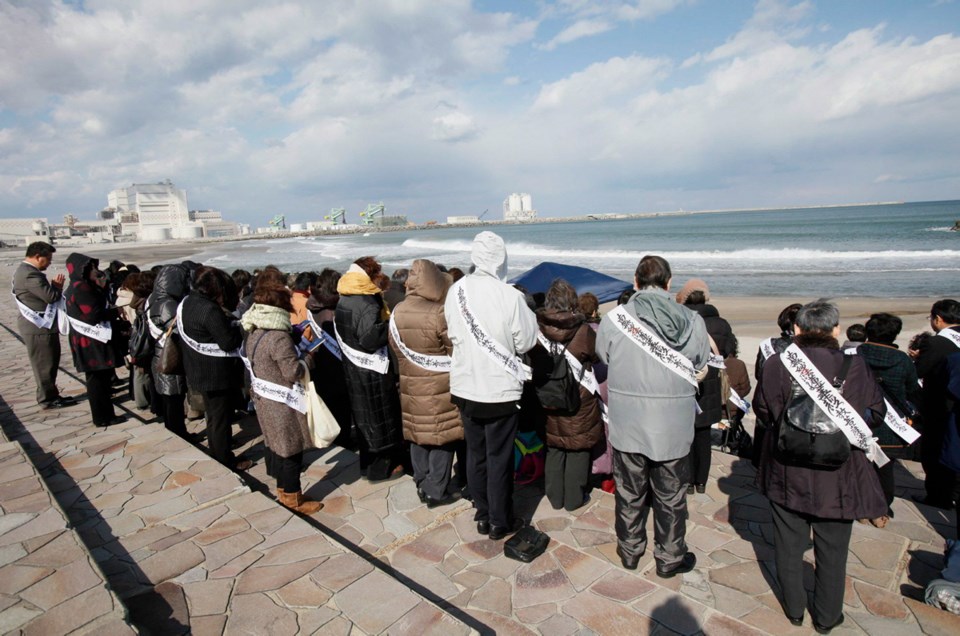VANCOUVER ŌĆö A radioactive metal from the Fukushima nuclear plant disaster in Japan has been discovered in the Fraser Valley, causing researchers to raise the alarm about the long-term impact of radiation on B.C.ŌĆÖs west coast.
Examination of a soil sample from Kilby Provincial Park, near Agassiz, has for the first time in this province found Cesium 134, further evidence of Fukushima radioactivity being transported to Canada by air and water.
ŌĆ£That was a surprise,ŌĆØ said Juan Jose Alava, an adjunct professor in the school of resource and environmental management at Simon Fraser University, in an interview on Tuesday. ŌĆ£It means there are still emissions ... and trans-91įŁ┤┤ air pollution. ItŌĆÖs a concern to us. This is an international issue.ŌĆØ
Cesium 134 has a half-life of two years, meaning its radioactivity is reduced by half during that time. Its presence in the environment is an indication of contamination from Fukushima.
A more persistent danger to people and marine life is radioactive Cesium 137, which has a half-life of 30 years, and bioaccumulates in the food chain.
Researchers developed a model based on the diet of fish-eating killer whales along with the levels of Cesium 137 detected and predicted (less than 0.5 becquerels per cubic metre, a measurement of radioactivity) by other researchers in the 91įŁ┤┤ waters offshore of 91įŁ┤┤ Island.
The models suggests that in 30 years, Cesium 137 levels in the whales will exceed the 91įŁ┤┤ guideline of 1,000 becquerels per kilogram for consumption of seafood by humans ŌĆö 10 times the Japanese guideline.
Alava said recent federal cutbacks have placed a greater burden of testing and monitoring for aquatic impacts on academics, non-governmental organizations and even private citizens.
ŌĆ£The 91įŁ┤┤ government is the one that should be doing something, should be taking action to keep monitoring to see how these contaminants are behaving, what are the levels, and what is next.ŌĆØ
It was a citizen, Aki Sano, who provided Simon Fraser University with the soil sample from Kilby park, near the mouth of the Harrison River, on Nov. 16, 2013. Samples of chinook, sockeye and chum spawning salmon nearby are also being analyzed for evidence of radiation.
While the soil sample tested positive for Cesium 134, the exact level is not yet known, although it is thought to be low. The plan now is to test soil samples from Burnaby Mountain, closer to 91įŁ┤┤.
Earlier research by Kris Starosta, associate professor of chemistry, and his colleagues at SFU has shown evidence of Iodine 131, which has a half-life of eight days, in rainwater and seaweeds in B.C. Fisheries and Oceans Canada conducted the analysis of sea water off 91įŁ┤┤ Island.
An adult killer whale weighing up to 5,000 kilograms can eat five per cent of its body weight, or 250 kilograms of fish, per day.
Endangered resident killer whales already face a host of challenges: the need for high-protein chinook salmon, habitat degradation, underwater noise pollution, harassment from whale watchers, and climate change. While the additional impact of Cesium 137 is unknown, it may negatively affect the immune or endocrine systems, Alava said.



